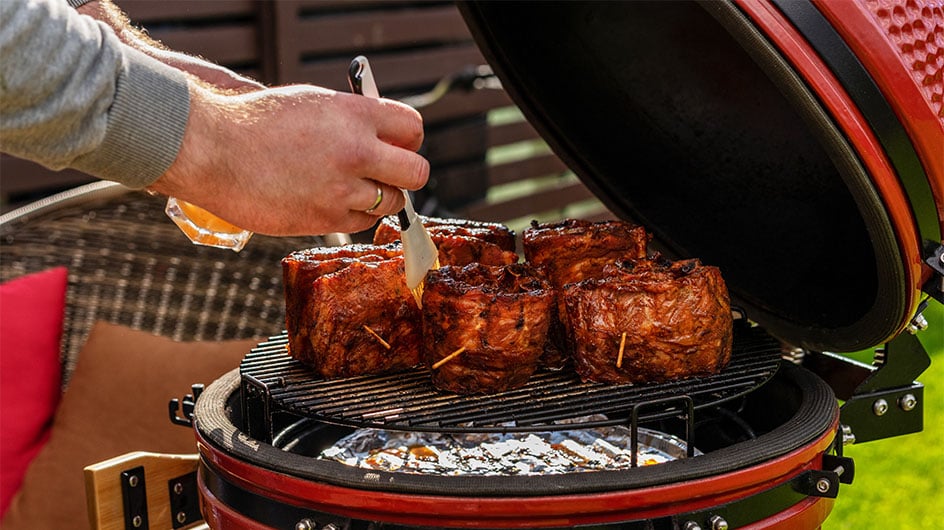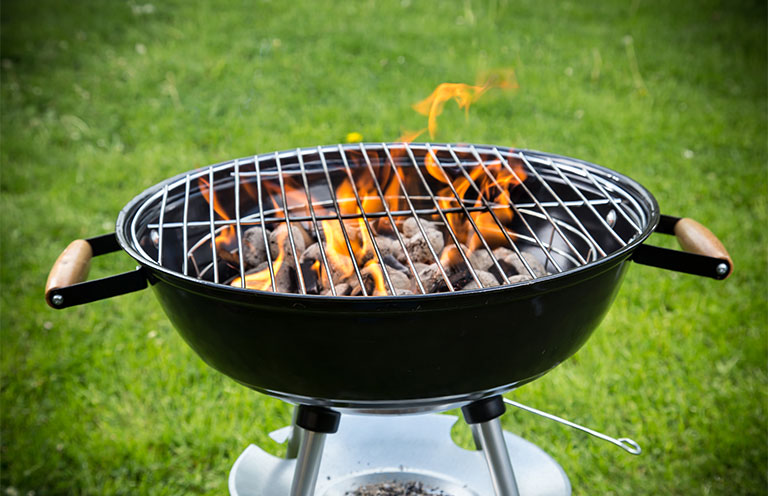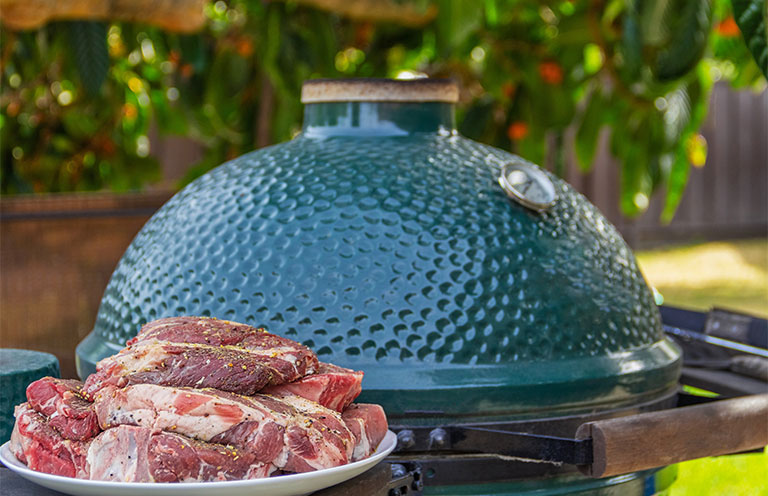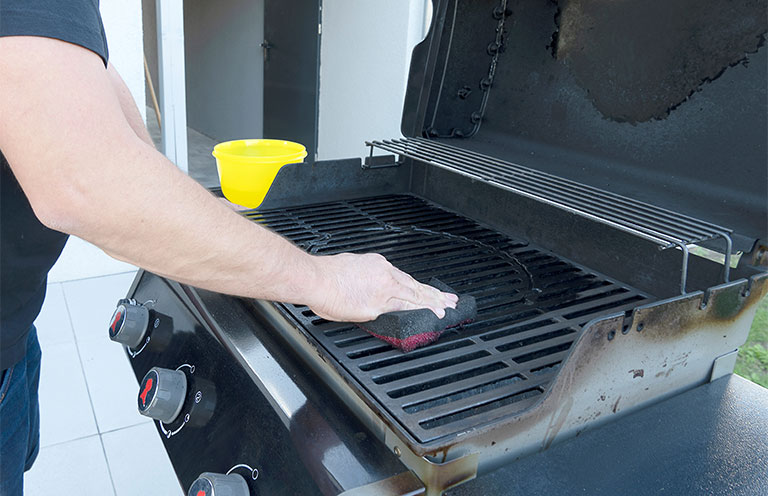Step Up Your Grilling Game with These Pro Tips
From charcoal to kamado, learn how to select a grill, prep your protein, and nail the cooking for juicy, flavor-packed results


Come summer, the sizzling aroma of flame-cooked foods fills the warm air.
There’s a practical reason why summer is grilling season: It keeps the heat out of the kitchen while adding bold flavor to your food. Plus, grilling is a social affair, as the cook can tend to the flames and chat with friends at the same time.
Still, grilling is a culinary art. Here are key tips to help you serve the perfect steak, veggie, or shrimp skewer.

How to find the right grill
If you’re looking to replace your grill or add to your collection, it pays to know the differences between grill types and how each one suits your talent, comfort level, and patience.
Charcoal grills
They’re ideal for purists, the grills use briquettes, but you can also add hardwood. Keep in mind that charcoal takes time to heat up, and cooler weather can slow the process. An ignition burner can help by eliminating the need for pretreated charcoal or lighter fluid.
Gas grills
Their burners deliver instant heat that’s easier to control. Many models come with built-in smoker boxes, infrared burners, or rotisseries, offering added versatility.
Electric grills
They’re best for those who live in buildings or communities that restrict open flames. That said, many grilling enthusiasts don’t consider them ”true” grills due to the lack of fire or smoke.
Kamado grills
With their Asian design, these ceramic grills retain and radiate high heat efficiently. The Big Green Egg is a bestseller. Alfred recommends using them for smoking and long cooks.

Tips for grilling meat
Red meat—such as sirloin or ribeye—is a classic choice for grilling but not all cuts are equal. The flavor, tenderness, and overall quality of your grilled steak largely depend on the cut you choose and how you prepare it.
Here are a few tips to help you pick the right cut and get the most out of your grilling session.
Bone-in cuts bring big flavor
Bones act as natural insulators, helping meat retain moisture and enhancing taste during cooking. Meat lovers typically choose a bone-in ribeye or T-bone for a richer, juicier bite.
Lean cuts need some TLC
Leaner cuts such as flank or sirloin tend to be tougher, so tenderizing is key. Marinades can help break own muscle fibers and add favor. Buy a prepared marinade, use Italian dressing, or make your own. For the best results, let the meat marinate overnight.
Look for marbling
This refers to the streaks of fat within the muscle. These melt during cooking, adding moisture and flavor. A simple seasoning of salt and pepper—or a seasoning blend—is usually all you need.
"...it’s important to pull your meat off the grill five degrees below desired doneness..."
David Rose, executive chef for Omaha Steaks, recommends fully thawing the steak before grilling. “A cold steak will result in an undercooked steak,” he says. “I also recommend seasoning your steak at least 30 minutes before grilling to allow the flavors to permeate the steak. Finally, it’s important to pull your meat off the grill five degrees below desired doneness and let it rest for about five minutes before slicing for the perfect steak.”
During the resting period, meat fibers relax so that the juices pushed to the center during cooking can recirculate. Some experts recommend a 10-minute rest.

Tips for grilling chicken
For the most flavorful and juicy results, choose bone-in, skin-on chicken. The bones help retain moisture, and the skin adds both flavor and crisp texture when grilled properly.
If you’re using boneless, skinless breasts or thighs—which cook faster but can dry out more easily—consider parboiling them in seasoned broth before grilling for a juicier result.
When it comes to sauces, timing matters. Don’t brush on sugary barbecue sauces too early—sugar burns quickly over high heat, which can leave your chicken charred and bitter. Instead, add these sauces during the last few minutes of grilling.

Tips for grilling fish
Firm fish, including halibut and swordfish, hold up well when grilled, says Trimell Hawkins, executive chef and culinary adviser to
To ensure successful grilling, consider these additional tips.
Avoid grilling flaky fish directly
Delicate varieties—such as flounder and cod—can fall through the grill grates. Instead, wrap delicate fish in foil with herbs, butter, and other aromatic ingredients, then place the foil packet on the grill.
Marinate briefly
Limit marinating time to 15 to 30 minutes to prevent seafood from becoming mushy.
Skip citrus-heavy marinades
Avoid acidic marinades that will “cook” the fish, turning it into ceviche-like texture.
Start skin-side down. If the fish has skin, cook that side first. According to Hawkins, it’s far more forgiving than the fleshy side and helps keep the fish intact.
Mayonnaise is your friend, Hawkins adds. “Whether you’re a newbie cook or a master chef, a light coating of mayonnaise on the fish will help keep it from sticking and will crisp the skin,” he says.
Pick your produce
As with fish, firm vegetables in larger pieces are preferable. Alternatively, skewer them. Pineapple, which is sturdy, and stone fruits—such peaches, nectarines and plums—do well on the grill.

Master your grill for better results
Keep the grill clean
Heat acts as a natural cleanser. Fire up the grill, and then use a grill brush to scrub the grates before cooking. “A hot, clean grill is key to great grilling,” Figueroa says.
Oil the grates
After cleaning, brush the grates with a high smoke-point oil to prevent sticking and add flavor.
Know your grill’s eccentricities
Every grill has cold and hot spots. Learning where they are helps you avoid over- or under-cooking.
Skilled grillers play with food placement, and adjust vents to fine-tune heat and airflow to achieve optimal results.

Be prepared
Because timing is everything when it comes to grilling, assemble everything that you’ll need before you start—utensils, oils, spritz bottle, gloves, oils, and ingredients.
“Review your recipe and prep accordingly,” advises David “Chef Fig” Figueroa, president and co-founder of Melinda’s Foods, a Texas-based craft pepper sauce brand. “You don’t want to be scrambling mid-cook.”
Review recipes and determine the cooking times so everything is done at once, he adds. “Time your grilling so you’re not leaving veggies sitting cold while waiting for your meat to rest,” he explains. “It’s all about serving everything hot and fresh.”
In short, he notes, “Cook smarter, not harder.”
